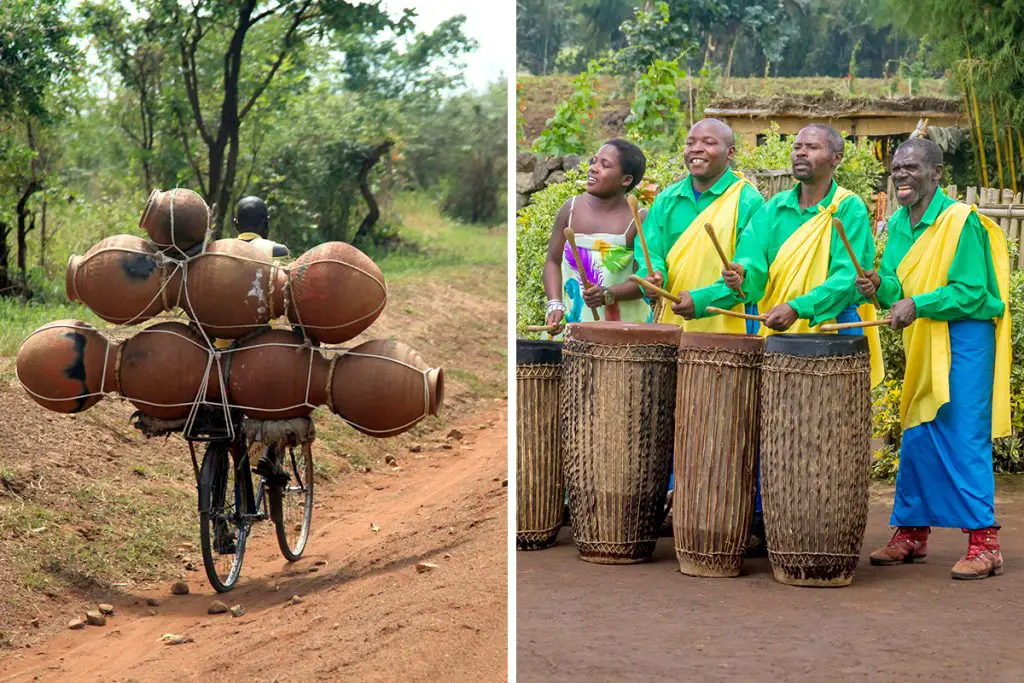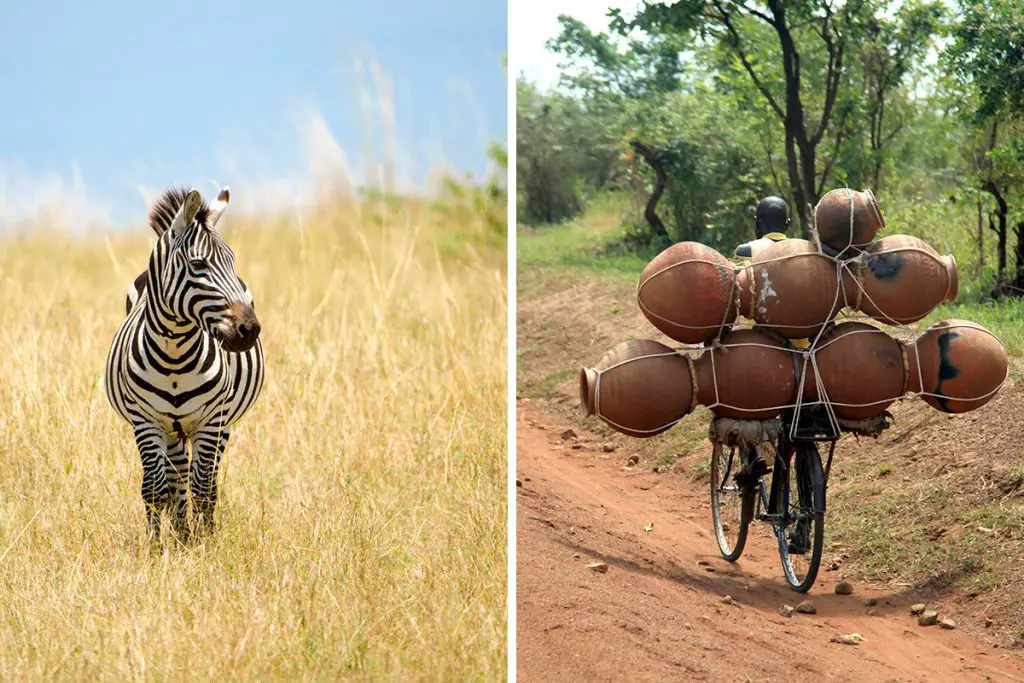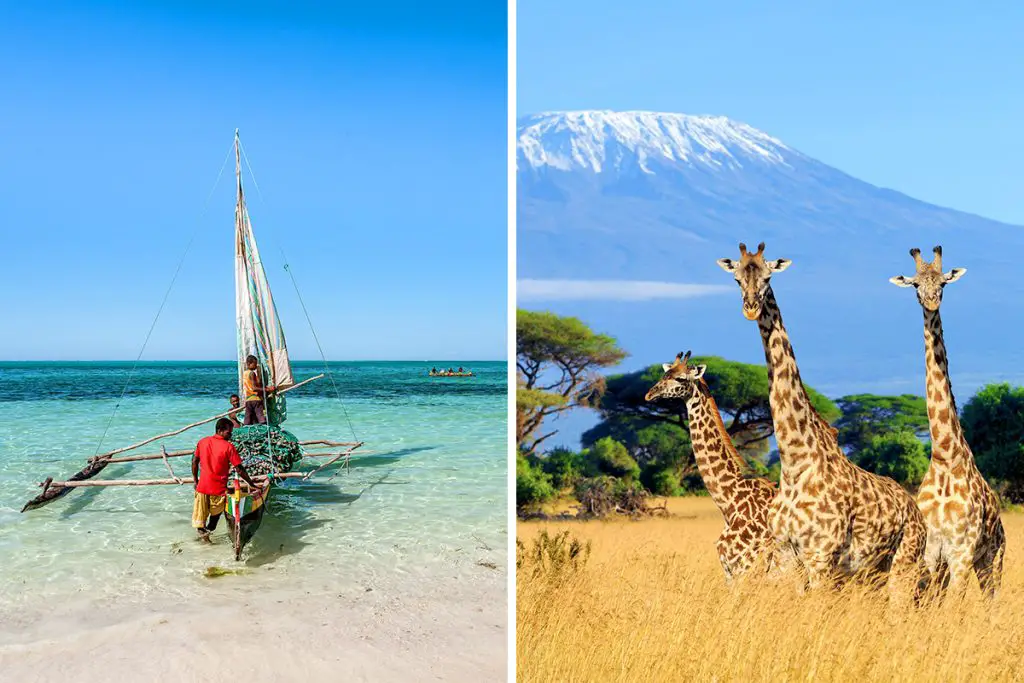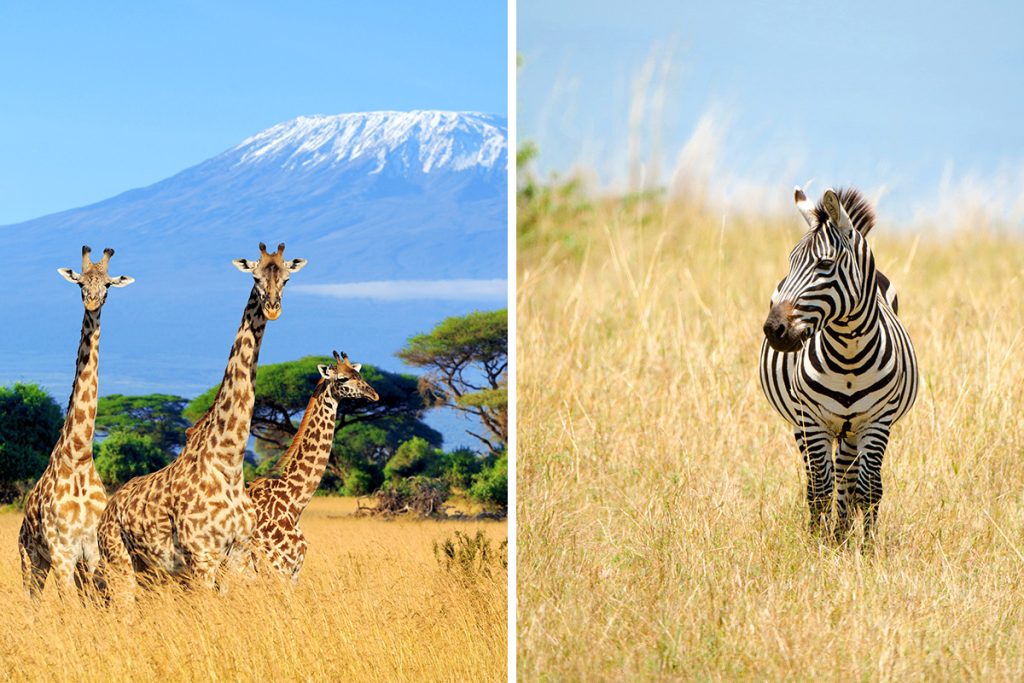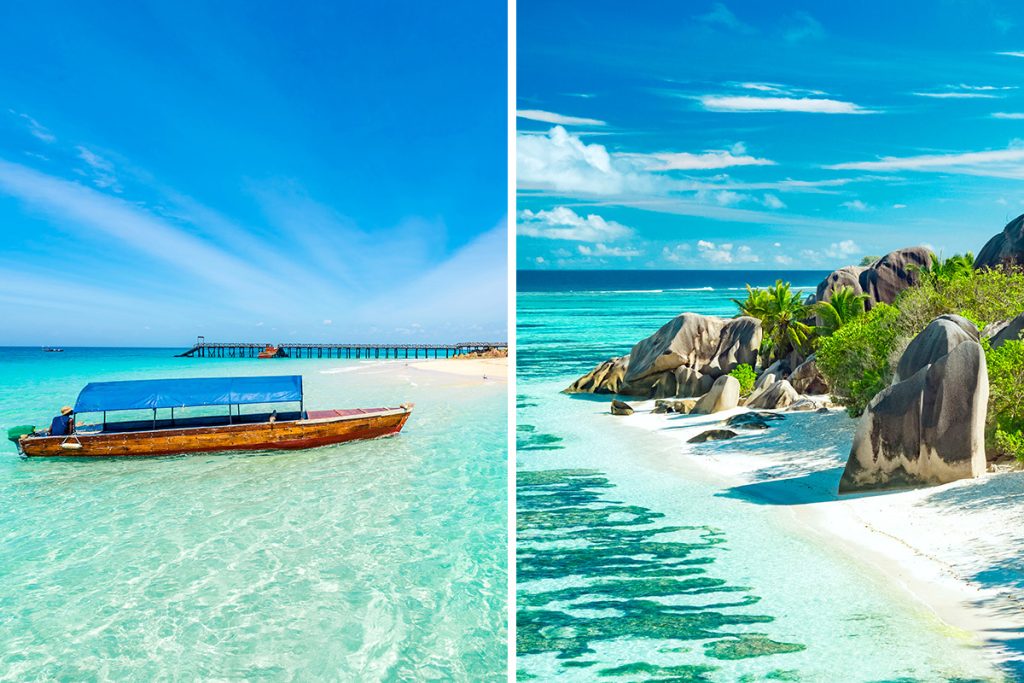Diving into the depths of Uganda or Tanzania reveals distinct flavors of history and culture that are sure to captivate your senses. From ancient tribes to modern traditions, each country is a rich tapestry of stories waiting to be discovered. Intrigued? Stick around, and let’s unravel these two gems to help you make an informed decision.
History & Culture
First off, understanding the history and culture of a place can enrich your travel experience immensely. In this section, you’ll get a quick but insightful comparison between the historical and cultural landscapes of Uganda and Tanzania.
Uganda is a cultural cauldron, bubbling with more than 50 indigenous tribes. Each tribe has its unique customs, dances, and languages. The Kingdom of Buganda is particularly significant, having shaped much of Uganda’s history. So, if you’re keen on diving into a rich cultural mosaic, Uganda is a jackpot.
The country also carries the weight of more recent history, with its tumultuous political past, which has given way to a vibrant, modern society.
Now, swing your attention to Tanzania. The country boasts of ancient history that goes back to the early days of mankind. The Maasai, Chaga, and Zaramo tribes are just a few examples of the diverse cultures you’ll encounter.
Unlike Uganda, Tanzania has a coastline, which led to early interactions with Arab traders and consequently, a blend of cultures. Think about the ancient ruins of Kilwa Kisiwani and the spice-filled air of Zanzibar; it’s a mix of the old and the new.
Both countries take immense pride in their diverse languages. In Uganda, you’ll hear people speaking Luganda, Swahili, and even English. Tanzania mostly communicates in Swahili, but English is also widely understood. In terms of religion, Christianity is the major faith in Uganda, while Tanzania has a more diverse religious landscape, including a significant Muslim population.
In summary, Uganda offers a more inland, tribe-oriented culture with a rich political history. Tanzania, on the other hand, provides a coastal experience filled with ancient history and a blend of cultures. Both countries are kaleidoscopes of traditions, making them equally fascinating but distinctly different. So, when you’re choosing between Uganda and Tanzania, ask yourself: are you drawn to the depths of indigenous tribes or the breadth of ancient coastal civilizations?
Attractions & Activities
When it comes to attractions and activities, Uganda and Tanzania are both brimming with opportunities that’ll make your trip unforgettable. From wildlife expeditions to historic landmarks, each country has its unique charm. So, let’s delve into what each of these exciting destinations has to offer.
Start by thinking of Uganda as the ultimate playground for nature lovers. The Bwindi Impenetrable National Park is home to nearly half of the world’s mountain gorillas. Imagine trekking through lush forests to come face to face with these majestic creatures; it’s a once-in-a-lifetime opportunity.
The Rwenzori Mountains are another highlight. Known as the “Mountains of the Moon,” this mountain range offers trekking experiences that take you through diverse landscapes—from bamboo forests to snow-capped peaks.
Now, flip the coin and let’s look at Tanzania. Think of it as an open-air museum of natural wonders. The Serengeti National Park, for example, is where you can witness the Great Migration, one of the most spectacular wildlife events on the planet. Wildebeest, zebras, and gazelles move in a cyclical pattern, offering thrilling safari opportunities.
If you’re into mountaineering, the towering Mount Kilimanjaro calls. As the highest peak in Africa, it’s a magnet for climbers aspiring to conquer its 5,895 meters (or 19,341 feet) above sea level.
While Uganda is more forest-centric, Tanzania offers a wider range of landscapes. For instance, the Ngorongoro Crater provides an almost magical setting for wildlife viewing. Picture a gigantic volcanic caldera filled with a myriad of animals like lions, elephants, and rhinos—it’s like a natural amphitheater for Africa’s Big Five.
To sum it up, Uganda offers intense, intimate experiences with nature, focusing more on forest landscapes and endangered species. Tanzania, on the other hand, offers a broader canvas, with sweeping savannas, towering mountains, and life-rich craters. Your choice would depend on whether you’re looking for a more specialized experience like gorilla trekking or a grand showcase of diverse landscapes and wildlife.
Beaches
Beaches may not be the first thing that comes to mind when thinking of Uganda and Tanzania, but each offers its own style of coastal delight. Although they present different kinds of beach experiences, both are perfect for those who want to unwind by the water. Let’s break down what you can expect.
Uganda’s coastline is confined to the shores of Lake Victoria, one of the largest freshwater lakes in the world.
The beaches here, like Lutembe Beach, are typically less crowded and offer a peaceful, laid-back vibe. They are perfect for a day of relaxation after adventurous activities inland. The distance to Lake Victoria from Kampala, Uganda’s capital, is roughly 30 kilometers (or about 18.6 miles).
Tanzania, in contrast, has a generous coastline along the Indian Ocean. Places like Zanzibar offer pristine white sands and crystal-clear waters. The beaches here are vibrant and full of life, making it a great choice for those who enjoy water sports like snorkeling and diving. From Dar es Salaam, Tanzania’s biggest city, Zanzibar is about 75 kilometers (or 46.6 miles) away by ferry.
Both countries offer water activities like boating and fishing. In Uganda, you can hop on a boat and tour some of the islands in Lake Victoria. In Tanzania, dhow cruises are a popular activity, where you can sail in traditional boats and catch the sunset.
In summary, Uganda provides a freshwater, inland beach experience that’s perfect for relaxation and low-key water activities. Tanzania offers an oceanic, more bustling beach atmosphere with opportunities for water sports. Depending on your preference—tranquil freshwater or lively ocean—you’ll find both Uganda and Tanzania offer compelling but distinct beach experiences.
Eating, Drinking & Nightlife
When it comes to the culinary scene, drinks, and nightlife, Uganda and Tanzania both offer vibrant experiences that can make your trip extra special. From local delicacies to nighttime escapades, let’s explore what these two fascinating countries bring to the table.
Uganda’s food scene is diverse, thanks to its blend of cultures. Dishes like matooke (steamed bananas) and groundnut stew are must-tries. If you’re a fan of freshwater fish, the tilapia from Lake Victoria is a local treat you won’t want to miss. Ugandan cuisine is hearty, filling, and often served with sides like yams or cassava.
Shift your gaze to Tanzania, where the coastal influence adds another layer to the culinary adventure. You’ll encounter dishes with Indian and Arabic twists like coconut bean soup and Zanzibar pizzas. Seafood is a big deal here, so don’t pass up the chance to try their calamari or prawns.
When it comes to drinks, Uganda is famous for its banana wine and local beers like Bell and Nile. These are perfect for a casual evening as you chat with locals or relax by the lake. In Tanzania, you’ll find an array of options including Konyagi, a local gin, and various types of exotic fruit juices like baobab and tamarind.
Nightlife in Uganda is bustling, particularly in Kampala, where the party seems never-ending. With a range of bars, lounges, and nightclubs, the city offers a variety of ways to dance the night away. Tanzanian cities like Dar es Salaam also present a lively nightlife, with ocean-facing bars and local music that’ll get your feet moving.
To summarize, Uganda offers a rich culinary experience influenced by its diverse tribes, along with local drinks and active nightlife in its cities. Tanzania boasts a more coastal culinary vibe, a unique array of drinks, and a vibrant nightlife often featuring local music. Your choice will depend on what kind of culinary adventure and nighttime fun you’re after.
Shopping
Shopping in Uganda and Tanzania can be as much an adventure as any safari or mountain trek. Whether you’re looking for souvenirs, local crafts, or fashionable attire, both countries have something unique to offer.
In Uganda, the capital city of Kampala is your go-to place for shopping. Markets like Owino offer a maze of stalls where you can find everything from vibrant African fabrics to handmade crafts like wood carvings and beaded jewelry. If you’re into art, the Ndere Centre is a hub where local artists display their work, including paintings and sculptures.
On the flip side, Tanzania offers a more diverse shopping scene due to its coastal influence. The Makuti Darajani market in Zanzibar is famous for its spices, so it’s a must-visit if you want to bring home some exotic flavors. Dar es Salaam’s Kariakoo Market is another bustling spot, ideal for picking up Tanzanian fabrics known as “Kanga” and beautifully crafted Maasai jewelry.
Both countries offer modern shopping malls where you can find international brands. Uganda’s Acacia Mall and Tanzania’s Mlimani City are examples of such places, perfect for when you’re in the mood for a more conventional shopping experience.
To wrap things up, Uganda offers an eclectic mix of crafts, textiles, and local art in its bustling markets. Tanzania, with its rich coastal history, provides a broader range of items including spices, fabrics, and intricate jewelry. Where Uganda offers you the traditional, Tanzania stretches out an arm to the exotic. Both, however, guarantee that you’ll bring home more than just memories.
Accommodation
Choosing the right place to stay is a critical part of your trip, and Uganda and Tanzania offer a range of options, from luxury lodges to budget-friendly hostels. Here’s how they compare.
In Uganda, you’ll find a wide array of accommodations. Luxury safari lodges near national parks like Bwindi and Queen Elizabeth offer an immersive nature experience. Here, you can wake up to the sight of gorillas in the mist or elephants at the watering hole.
If you prefer city life, Kampala has a mix of international hotels like Sheraton and locally run guest houses that offer Ugandan hospitality at its finest.
Tanzania, on the other hand, flaunts its beachfront resorts in places like Zanzibar. Imagine waking up to the view of turquoise waters and palm trees swaying in the wind.
The Serengeti also offers luxe tented camps where you’ll feel close to nature without sacrificing comfort. In cities like Dar es Salaam, you’ll find international chains and boutique hotels that reflect Tanzania’s mix of cultures.
Both countries also offer budget-friendly options. In Uganda, you’ll find backpacker hostels and guesthouses in most towns. Tanzania also caters to budget travelers with a range of modest beach huts and local guesthouses, especially in smaller towns and villages.
In summary, Uganda offers a rich mix of accommodations from luxury safari lodges to budget-friendly hostels. Tanzania leans more towards coastal resorts and tented camps in the Serengeti. Your choice will likely depend on whether you’re looking for an inland adventure or a beachside retreat.
Family-Friendliness & Children’s Activities
If you’re traveling with family, both Uganda and Tanzania have a ton to offer. From wildlife adventures to interactive cultural experiences, you’ll find plenty of ways to keep everyone engaged.
In Uganda, family-friendly safari options in parks like Murchison Falls and Queen Elizabeth welcome kids of all ages. Various camps offer specialized children’s activities such as junior ranger programs. There are also community visits where your family can learn traditional crafts and dances.
Tanzania takes family fun to a new level with its island getaways. Zanzibar, in particular, is perfect for families looking to combine beach fun with cultural education. Imagine going on a spice tour one day and snorkeling the next. Many resorts offer kids’ clubs with activities tailored to younger guests.
Both countries also provide a range of lodging options that cater to families. In Uganda, you’ll find large safari tents that can accommodate families, as well as lodges with connecting rooms. Tanzania offers similar lodging choices but adds in the element of beachside villas, perfect for larger families.
In conclusion, Uganda and Tanzania both excel in offering family-friendly adventures. While Uganda offers inland safaris and cultural experiences, Tanzania brings in the allure of the beach. Your choice will hinge on what sort of environment and activities your family prefers.
Getting There & Getting Around
Navigating your way to and around Uganda and Tanzania can be quite an adventure in itself. Let’s compare the transportation aspects of both destinations.
To get to Uganda, Entebbe International Airport is your main gateway. It’s about 40 kilometers (around 25 miles) from the capital city of Kampala. Major airlines like Emirates and KLM have frequent flights. Tanzania’s Julius Nyerere International Airport, located approximately 12 kilometers (about 7.5 miles) from Dar es Salaam, also serves as a hub for international airlines.
For getting around Uganda, matatus (shared minibuses) and boda-bodas (motorcycle taxis) are common. However, these might not be the best choice for long-distance travel or if you’re not accustomed to the local driving norms. Many travelers opt for private car hires, which can be arranged through most hotels.
Tanzania, on the other hand, offers the dala-dala (shared minibusses) for short trips and the option of coastal ferries for inter-island travel. Again, private cars or guided tours are often recommended for longer journeys.
In both countries, you can also opt for domestic flights to cover larger distances. Uganda has several airstrips near major tourist sites, while Tanzania offers flights to popular destinations like Zanzibar and Arusha.
In summary, getting to Uganda and Tanzania is straightforward with international airports near major cities. While Uganda offers matatus and boda-bodas for local travel, Tanzania offers dala-dalas and coastal ferries. For ease and convenience, especially over longer distances, private car hires or domestic flights are often the best way to go in both countries.
Weather
Weather can make or break your travel plans, so let’s dive into what you can expect climate-wise in Uganda and Tanzania. Whether you’re planning a safari, a mountain hike, or a beach retreat, understanding the weather is key.
In Uganda, you can generally expect a tropical rainforest climate, especially in the south.
The wet seasons typically occur from March to May and September to November. During these months, temperatures can range from 60°F to 75°F (15°C to 24°C). The dry seasons, December to February and June to August, are warm with temperatures between 70°F and 85°F (21°C and 29°C).
Tanzania experiences a tropical coastal climate along its beaches and an arid climate inland. You’ll find the weather more or less stable throughout the year, with two rainy seasons, from March to May and November to December.
Coastal areas like Zanzibar can get hot and humid, with temperatures climbing up to 95°F (35°C) while inland temperatures generally range between 60°F and 75°F (15°C to 24°C).
When you look at the big picture, both countries offer a mix of wet and dry seasons. However, Tanzania tends to have higher temperature fluctuations depending on the location. Uganda generally stays lush and cooler due to its higher altitude and dense rainforests.
In summary, Uganda offers a generally cooler, wetter climate, great for those who prefer a less extreme temperature range. Tanzania provides a wider range of weather experiences, making it suitable for both beach lovers and those who enjoy a dry, arid climate.
Safety
Your safety is paramount when choosing a travel destination. Here’s how Uganda and Tanzania stack up in terms of safety, both in cities and rural areas.
In Uganda, petty crime like pickpocketing can be an issue in crowded places or large cities like Kampala. Always exercise common sense, like not displaying flashy jewelry or large sums of money. Political gatherings should be avoided as they can get unruly.
Tanzania also advises caution against petty crime, especially in cities like Dar es Salaam. However, tourist areas like Zanzibar and the Serengeti are generally considered safe, although it’s always good to stay vigilant.
In terms of health, Uganda requires a yellow fever vaccination, and it’s advisable to take malaria prophylaxis. Tanzania also has a risk of malaria, particularly in rural areas, but yellow fever is only a concern if you’re coming from an infected area.
Both countries offer the opportunity for unique wildlife experiences, but this comes with its own set of risks. Always adhere to guidelines and instructions when on safari or trekking to ensure you stay safe around wild animals.
To wrap up, both Uganda and Tanzania require a similar level of vigilance to ensure your safety. Petty crime exists in busy areas, and health considerations like vaccinations and malaria prevention are a must. Following guidelines during wildlife encounters is essential in both countries.
Cost
Budgeting your trip is crucial, so let’s get into the nitty-gritty of how your money will fare in Uganda and Tanzania. From food to lodging and transportation, knowing the costs can help you make a smarter choice.
In Uganda, a decent hotel room in Kampala could cost around $70. Meals at mid-range restaurants usually run from 30,000 to 50,000 Ugandan Shillings (approximately $8.50 to $14.50). Public transportation is relatively inexpensive, with a typical bus fare of around 1,500 Ugandan Shillings (about $0.50).
Tanzania offers a range of options too, but it’s generally more expensive. A hotel room in Dar es Salaam might set you back around $250. Eating out can cost you 20,000 to 40,000 Tanzanian Shillings (approximately $9.50 to $18.50). Public transportation, like the Dala Dala, usually costs about 500 Tanzanian Shillings ($0.50).
In both countries, safari experiences can be pricey, ranging from $200 to $400 per day, depending on the level of luxury you opt for.
In summary, Uganda is generally a more budget-friendly option, especially when it comes to lodging and food. Tanzania, while slightly pricier, offers a broader range of experiences that may justify the higher costs, especially if you’re keen on coastal or island destinations. Your budget will stretch in different ways depending on what experiences top your list.
Which Is Better – Uganda or Tanzania?
You’ve explored various facets of travel to Uganda and Tanzania – two diverse and fascinating countries. Let’s circle back and sum up what we’ve learned to help you make an informed decision.
When it comes to history and culture, Uganda shines with its lush, cooler climate, making it a haven for those who favor less extreme temperatures. Tanzania, on the other hand, offers a wider climate range suitable for beach lovers and fans of arid landscapes. Both countries are steeped in rich history, but Uganda provides a generally wetter, more tropical experience.
In terms of attractions and activities, Uganda offers incredible opportunities for trekking and wildlife viewing, particularly for those keen to see gorillas. Tanzania counters with its world-famous Serengeti National Park and the chance to witness the Great Migration, one of the most spectacular wildlife events on the planet.
Beach-wise, Tanzania is the go-to choice with its pristine coastal areas like Zanzibar, offering beautiful sandy retreats. Uganda doesn’t measure up in this aspect, as it is a landlocked country without oceanic beaches.
Eating, drinking, and nightlife offer their own joys. Uganda is the place for you if you’re keen on a more budget-friendly dining experience, while Tanzania offers a wider variety of options, albeit at a slightly higher cost. Both countries offer unique local brews and vibrant nightlife but in different settings.
For shopaholics, Tanzania has a slightly more upscale shopping experience, with its various boutique stores and markets, while Uganda provides a more rustic, local shopping experience.
Accommodation in Uganda tends to be more budget-friendly, making it an excellent choice for travelers keeping an eye on their wallet. Tanzania offers a broader range of experiences but at a higher price point.
Family-friendliness and children’s activities are abundant in both countries. Uganda has a more budget-friendly focus, which might make it a better choice for families. Tanzania offers a variety of experiences, some at a higher cost, which may be more suitable for families looking for a bit of luxury.
Both countries offer unique wildlife experiences, but these come with their own safety guidelines which are a must-follow. Transportation is more straightforward in Tanzania with more extensive infrastructure, whereas Uganda offers a more rugged, authentic experience.
To sum it up, Uganda is your destination if you’re after a cooler climate, budget-friendly options, and a focus on trekking and wildlife. Choose Tanzania if you’re looking for a wider range of climates, more upscale shopping and dining, and world-renowned beaches and safaris. The best destination hinges on what experiences you seek and how you prioritize your budget, climate preferences, and the type of activities that excite you the most.


